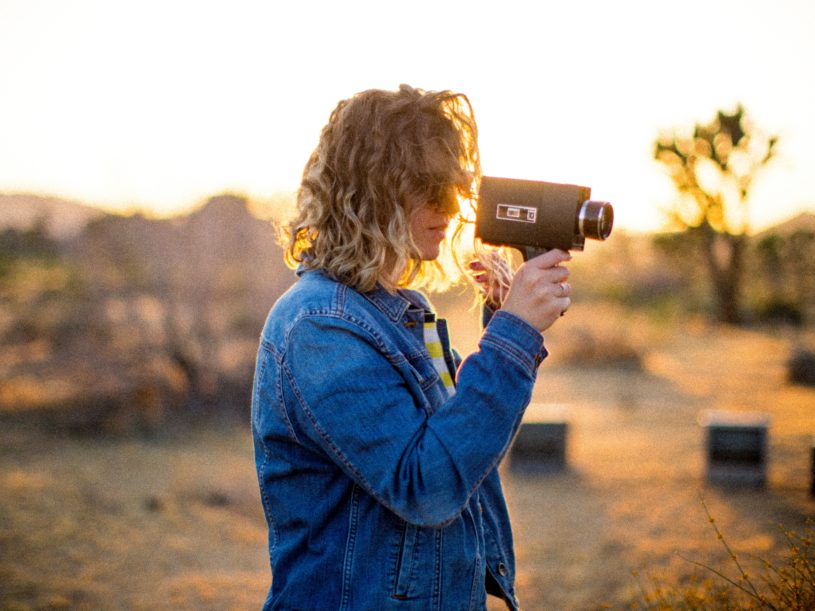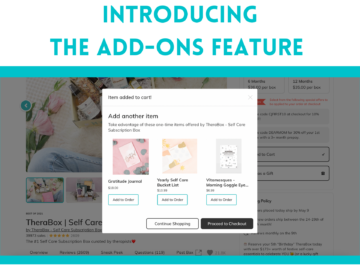It’s official: video marketing is the future of ecommerce. With so many people shopping online these days – according to Statista, the 2017 holiday season saw revenue of $72.3 billion in desktop sales alone – you’d be remiss not to provide video of your subscription products on your storefront and Marketplace listing.
Why Video?
In a word? (Or two?) Setting expectations.
A video that shows off the products in a typical box or otherwise demonstrates your value proposition (whether that be experiential or quantitative, like a “bargain” or a certain number of items) is the closest customers can get to seeing your box in person. This allows you to set customer expectations more easily, avoiding any surprises (or potential disappointment) in the future. Basically, videos are crucial to convey the essence of your product – and convert potential subscribers or gifters.
In fact, video has such a positive correlation with higher conversion rates that according to SEO expert Neil Patel, viewers are 64-85% more likely to buy after seeing a video of the product. Furthermore, a study by LiveClicker discovered that videos can boost AOV by 68% – and a third of their survey respondents said that using video raised their conversion rates by 91%!
Lastly, video marketing helps to humanize your brand. Consumers like seeing the personality – and people – behind a brand; it creates a warmer, more personable relationship between the brand and the customer. And isn’t that what you went into the subscription box business for? To connect with customers over your shared passions?
First, Set a Goal
Whatever type of video you decide to produce, you’ll need to tackle the steps below before the film shoot.
Why – specifically – are you creating this video? Do you want to raise your conversion rate, get traffic on your site from people sharing the video, increase brand reach, or something else?
Consider where you intend to publish the video. If your video will be on your Marketplace listing, you’ll want to focus on conversion rate or AOV (average order value). If the video is for YouTube or social media, you’ll want to think about brand reach (drawing in new customers).
Danuta Cloes, founder of all-natural, nontoxic household subscription the Home Detox Box, decided to create a video for her Marketplace listing to introduce the brand to new visitors. “I created the video because it was important to me that people understand the story and purpose behind my brand,” she explains. “The Home Detox Box isn’t meant to just be a box with a random collection of stuff to fill your home. The products I choose are specifically chosen and carefully curated to fill a purpose in your life in a meaningful way.”
“I felt like I needed an outlet to share more about my message, that my box is meant to help people and families who want to learn more about how to live healthy, toxin-free lives…. Creating my video allowed me to share more about my mission in a more personal way.” -Danuta Cloes
Whether you want to show potential subscribers the backstory and value proposition of your brand, like Danuta does, or you want to simulate the unboxing experience, your goal will help you determine what kind of product video to make.
So let’s talk about the different kinds of video, shall we?
Self-Unboxing Videos
If you’re a new brand – or still working on sending your current box to influencers – an unboxing video conducted by you or a friend might be just what you need.
Ideally, these should be no longer than a minute long. Since you’re doing the unboxing, not an influencer, you don’t need to devote time to reviewing each product. (Frankly, if you did review each item, the sentiment would come off as biased and potentially inauthentic.) Rather than pushing the quality or uniqueness of each item in words, your purpose is to visually show each one’s value.
The above video by Birchbox serves as a kind of “trailer” for their subscription, opening several boxes in succession. In doing so, the anonymous model (“That could be me!”) shows off a variety of beauty products and even tests some of them for the customer. While there’s no voiceover – it’s not necessary here – the music is fun and gets viewers bobbing their heads. Best of all, the video is only 14 seconds long, which means the barrier to watch is lower; there’s no real time commitment. Potential subscribers can check it out and move on with their day.
Introductory Videos
Perhaps your business has an amazing backstory, or your value proposition is based around an experience – like cooking, reading, or quality family time. If that’s the case, an introductory video may be the strategy for you.
Adults & Crafts took this approach when filming their video for the brand’s Marketplace listing. You get a clear sense of the box’s value proposition and the brand’s sense of humor. In short, it connects with viewers by making them laugh – and then they want to have an experience similar to the subscriber in the video.
By the end of the video, you have a strong idea of what to expect from Adults & Crafts. Moreover, this video is barely over a minute long, establishing an easy time commitment for viewers.
Trailers
Think of these as a movie preview, but for your box. They usually don’t involve any interviews or voiceover (like the introductory video), nor do they concern the unboxing experience. Instead, you get a sense of the behind-the-scenes work that goes into such an amazing, well-curated box: the process of making, curating, or putting together each month’s collection of goods. Trailers are especially good for boxes with an element of craftedness, like artisanal or handmade products.
Take a look below at this example from Standard Dispatch:
Standard Dispatch specializes in handcrafted, personalized goods, so it’s an excellent example of the trailer video. Instead of using voiceover, they gravitate to cheerful, spunky music and a well-produced series of shots to reflect the quality of their custom-made products.
How-To Tutorials
Let’s say your subscription box provides an experience, but it requires a certain understanding or skill set to fully enjoy that experience. (Looking at you, Arts & Crafts.) You wouldn’t want subscribers to come away disappointed because they didn’t understand how to use the products in your box! So it only makes sense, really, to set up a branded YouTube channel for tutorials.
A ton of subscription box brands, even those that are product-based, do this already. Beauty brands like Ipsy offer makeup tutorials from smoky eyes to contouring, while lifestyle subscription Gentleman’s Box offers a series of how-to videos on “being a gentleman,” such as learning to tie a tie. Another Cratejoy merchant, the Korean sheet mask subscription FaceTory, devotes much of its YouTube channel to skincare explainers.
Here’s an example of one of FaceTory’s tutorials. For those who are new to K-beauty, this basic explainer on how to use a sheet mask is straightforward and fun, while those who are more familiar can still learn something. (Rubbing your face upward to avoid wrinkles? Who knew?)
Technical Tips
We can’t stress enough the importance of hiring a professional videographer, especially if you’re shooting something more complicated (like an introductory video). Like photography, filmmaking is a craft that requires the right equipment and studying to master. However, if you’re not willing to hire help, here are some tried-and-true tips to amp up your videography game.
- Use professional equipment! At the very least that means a tripod, a microphone, and a real video camera, not your smartphone. Ideally, that also includes a lightbox. Many studios – and sometimes libraries, especially university libraries – offer rental programs for equipment, as well as instructions on use. (While you’re at it, use technical editing software as well: we mean Final Cut, not iMovie.)
- Strategize your audio. If you’re doing an unboxing, music is your best bet for the audio track – but make sure, of course, that you’re not using something under copyright. (You can find a roundup of where to find music under Creative Commons licenses – and an explainer on what Creative Commons means – here.) If you’re doing an introductory video or tutorial, you need to invest in a good microphone and record in a quiet, distraction-free area.
- Write a script. Even a basic outline of what you want to say – whether you’re discussing your brand’s origin story or relaying how to use the products in that month’s box – will help you from rambling during takes. We’ve all done it under pressure, after all. Give yourself as much runway to avoid that as possible.
Publish That Production!
Cratejoy’s research finds that including a video on your store’s Marketplace listing has an especially large impact on conversion rate. We recommend uploading your YouTube video as soon as possible to capture early holiday shoppers.
Learn how: Check out our help doc on adding a YouTube video to your listing.



